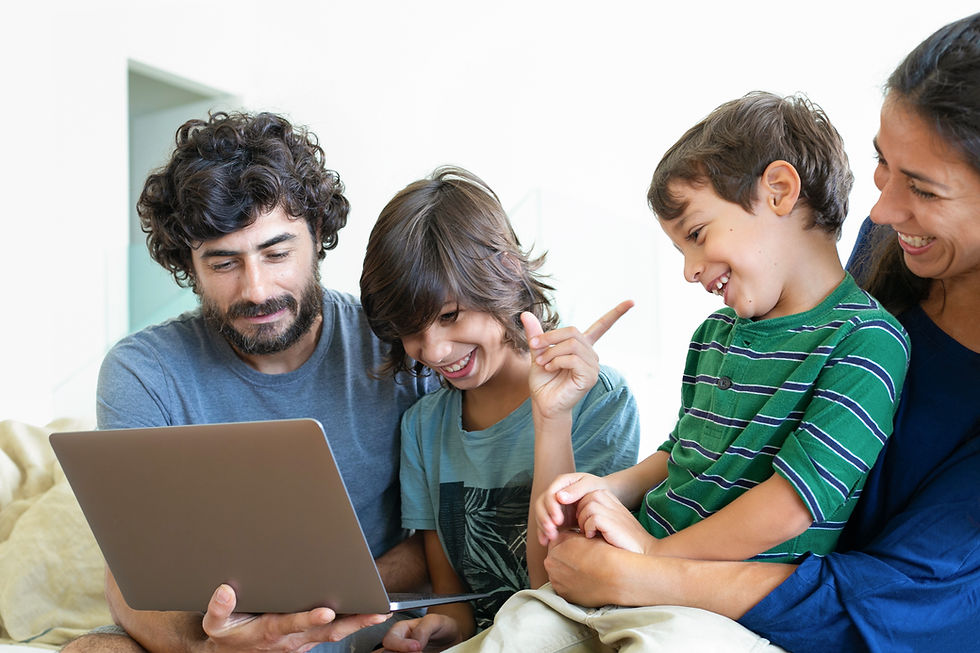Effective Communication and Interviewing (Part Two)
- Gary-Alan Hopkins

- Mar 11, 2021
- 4 min read
Table of Contents
Characteristics of an Interview
Note: This is the second part of a two part post. If you have not read part one of this post then I highly recommend you do that before reading further. Part one can be found here.

An interview can be performed in many settings and can be facilitated by technological advances such as conducting an interview over FaceTime, Zoom or even email in some circumstances. No matter the setting interviews have essential characteristics that are important no matter the form. Interviews are dyadic; meaning it has two parts. In the case of an interview this means interviews are between two parties. These parties can having two people, one interviewer and one interviewee, or they can be between two groups of people or between a interviewer and a group of people. It really doesn't matter the structure of the interview; my point is that it is always between two parties and no more than two. Interviews must be purposeful; meaning interviews are tools that are used to help us get needed information from a person or group of people. Interviews are also interactional; meaning there is a "mutual creation of meaning" and "both parties must exchange and share roles and responsibilities" (Vareberg, K., 2021).
Interview Settings
One-on-one - This is probably the most basic and familiar form of interviews. A one-on-one interview is just that; one person (interviewer) interviewing another person (interviewee). The interview from NBA Stats All Season between Kobe Bryant and Shaquille O'Neal (Shaq) below is an example of a one-on-one interview.
Small Group & Postgame - This is another common interview seen in various situations such as locker room postgame interviews between three or more people. A small group or postgame interview consists of an interviewer and two or more interviewees. An example would be when a group of reporters gather in a locker room to interview a sports team and coach after a game.
Role Reversal - A role reversal interview is one where the person normally conducting the interview (interviewer) is now the person being interviewed (interviewee). An example of this type of interview setting would be when a beat reporter gets invited on a news program, radio broadcast, podcast, etc. and is interviewed by the host of the program.
News Conference - A news conference has a different format than the other interviews listed in this section. These news conferences will usually consist of a panel of interviewees that take questions from the audience or group of reporters. Since the source or source's representative is in-control
Electronic - an electronic interview can take many forms. These forms can include email, phone, messaging through social network sites, video conferencing software, podcasts, etc. While these settings may allow for greater accessibility they have some drawbacks. These drawbacks can include not being able to visually see nonverbal cues, the interview may sound too rehearsed, the interviews authenticity may be questions and asking follow up questions might not be possible.
Preparing for an Interview

Prepping for an interview is a necessity. While it is still possible to conduct a successful interview on-the-fly with limited time to prepare; it requires extensive knowledge of the subject or subject's background. Most reporters, journalists and show hosts conduct extensive research before an interview takes place. The research provides information about the interviewee and it provides a foundation to construct high quality, relevant questions. As an interviewer you should inform the interviewee(s) at least 24-hours ahead of the proposed interview details and general topic. In addition, you will want to double check all equipment, resources and review critical details such as spelling and pronunciation of the interviewees name, athlete's position, coach's name, and other basic details to make sure you won't make a naive mistake.
During an Interview
Now that you have hopefully had time to prepare it's time to start the interview. The beginning of the interview should build rapport and clarify the intent, length and nature with the interviewee(s). This helps reduce any uncertainty for both parties. As the interviewer you should have created a list of questions based on the research completed when preparing for the interview. The number of questions needed for an interview depends on the time allotted but as a general rule of thumb you should aim for at least five questions. By aiming to construct at least five questions helps make sure you have enough material to gather the information needed.
In addition, to building rapport and making sure that you have enough questions to ask, you should ask the interviewee(s) if you can record the interview. It's also just as important to take notes, use time efficiently, make sure to answer the basics such as Who, What, Why, When, Where and How. Finally, to have a highly successful and engaging interview a good interviewer will probe and react to answers from the interviewee(s).
After an Interview
You're in the homestretch! You've selected the interviewee, did the research, constructed engaging questions and took excellent notes. Now that the data has been gathered it is time to start putting the pieces together to create a story your readers will want to read and share with their social circle.
We begin by reviewing notes looking for quotes and/or attributions from the interviewee(s) that can support the thesis of the story. Before the quotes or attributions are use in the story it is important to go through and clean them up. It is a good idea to edit out the "uhm," "ugh," etc. and profane language.
Final Word
I want to hear from you. What is your favorite quote from either an athlete or coach? What was the biggest take away from this week's material?
References
Vareberg, K. (2021 Feb. 14). Week 9 [Video]. YouTube. https://youtu.be/gCuxXrJ64gU.


Comments